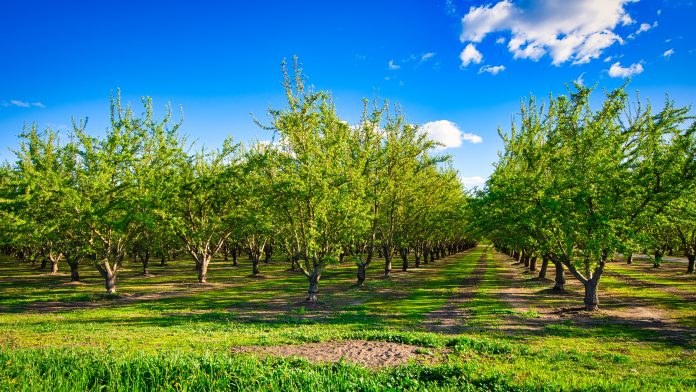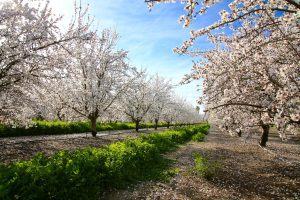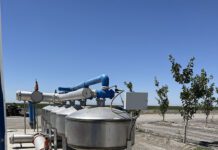
I saw a post online in the beginning of January that said, and I paraphrase, “God, the next time we do a rain dance, we’ll request a slow song!” I searched the internet to find the creator of the quote, but it made me laugh. It hit home that we aren’t in charge. When the government blocks us for this long and squanders the money they reappropriated for conveyance projects that weren’t completed, the good Lord lets us know he means business. And this year, the rain business is good. The first week of January, I saw the static water level in my well come up 10 feet. Then the rain really hit. My pistachios are on the east side of the valley in Madera, so I can only imagine what the valley floor aquifers look like. What do we do now?
When we are blessed with this kind of moisture and recharge, we clean the ground up quite a bit. Mother Nature has exacerbated our leaching fractions and percolated deep moisture below our orchards. We should find we can push much farther into the new year before we have to run the pumps for long irrigations. There’s just one small problem: we still need to feed our trees. I’ve discussed in the past few years that we need a plant-ready supply of phosphorus early in the season for energy. Many of the almond farmers I consult for didn’t have a good shot of fertilizer in their postharvest budget. With the price of walnuts, I don’t even want to discuss the difficulties you farmers face with that crop and its price. However, we still need to maintain our orchards and make every attempt to push the biggest crop possible to make ends meet. Too much water, both naturally occurring water and irrigation sets that are too long, can cause other issues when we feed the trees.

Make a Plan
Let’s discuss some strategies and why we need a plan. When I turn the water on, it’s usually when the top 12” have gotten to about 60 centibars of moisture. I want the roots to be a bit thirsty so they’ll pick up the first nutrition shots I provide. Most of the first irrigation sets my growers run are only to feed, and rarely last more than six hours. This does a few things:
It’ll pulse a small shot of water over the deeper layers that have adequate moisture. In my experience, it has kept the deep moisture from subbing up and holds more down there for later.
By going short on our sets, my growers find they keep more of that ever-increasing pricey fertilizer in the root zone and not push it below.
It allows us to irrigate more often with less and re-wet some of that nutrition that may not have been picked up or tied up.
We don’t get our soils too wet this way, and in a year like this, that strategy may stave off phytophthora and other soilborne pathogens that love anaerobic conditions.
It’s easier to run during non-peak hours this way longer into the season. We can then save a significant amount of money on our electricity bills.
As our soils start to warm up, add a few other soil enhancers. Organic acids and biology can help make previous applications more effective. A 1% increase in organic matter will hold 20,000 more gallons of water per acre. An extra 133 gallons of water per tree stored in the root zone can be a game changer when it gets hot. It’ll also help active soil biology flocculate the soil and give it some structure back. With rains this heavy and violent, a lot of silt fills pore spaces. We need carbon, biology and healthy roots to add structure.
Another thought on providing nutrition with wet soils: Fly it on. Our soils may be too wet to apply our fungicides in a timely manner this year. Add some nutrients to those aerial rides.
Adding phosphite to a typical NPK shot can not only provide some fungicidal effects; phosphite can help make adequate phosphorus applications more effective. Studies have shown phosphite will also move both directions in a plant through phloem as well xylem. And it’ll take other nutrients with it. I’m a big fan of adding a pint to an NPK ride that has a good orthophosphate derivative in it. There have also been many studies that show some nutrients like iron, manganese, cobalt, etc. can have a 7:1 greater absorption ratio by virtue of tissue tests after an application than a soil shot registers. The necessity of having to apply by air early may save us a good chunk of money when budgets are tight, compared to applying more nutrients through our irrigation system.
It’s becoming cliché, month after month, repeating the saying, “unusual times call for unusual measures.” But heck, we are farmers, and we are used to it. And like good marines, we find ways to overcome and adapt. Proper prior planning prevents poor plant performance. Don’t let your trees down. Adjust to the blessing we have received and feed them properly early and often.















